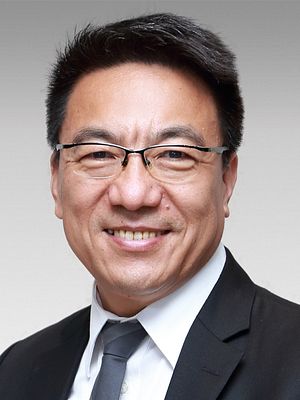Earlier this year, Premier Li Keqiang announced a substantial cut in corporate taxes and fees in order to reduce pressure on the private sector. With market vitality being unleashed, Chinese growth is expected to gradually stabilize in the coming quarters as the stimulus measures start to filter through.
Hongbin Qu, chief China economist at HSBC, says that private business investment is crucial for a self-sustained recovery as the nonstate sector accounts for the lion’s share of urban employment, patent applications, and GDP. In this interview, he discusses this year’s tax cut, which is the biggest in a decade.
Maurits Elen: How will the corporate tax cuts affect growth?
Hongbin Qu: Policy makers have announced a more expansionary fiscal policy for 2019. A sizable part (around 2 trillion RMB, approximately 2 percent of estimated 2019 GDP) is in the form of tax and fee charge reductions. This amount includes the 800 billion RMB cut to Value Added Tax (VAT), as well as sizable tax breaks for small and micro-sized companies, and reductions in social security payment. Given the private sector businesses are the largest tax payers in China, the tax cut helps to reinforce the ongoing recovery in private business investment. This has been focused on technology upgrading, which is essential for sustaining productivity-driven growth in China over the coming years. As the economy looks to have already bottomed in the first quarter, we believe the tax cut, which kicked in on April 1, will help reinforce the growth recovery, supporting 6.6 percent GDP growth in 2019.
To what extent are the tax cuts timely, temporary, and targeted?
The tax cuts are definitely quite timely, as it comes at a time when China’s private sector
businesses happen to be in a new wave of technology upgrading. Compared with past fiscal stimulus, which tends to focus on infrastructure, it is also more targeted. But compared with tax cuts in developed markets, China’s tax cuts combine stimulus with reform and are therefore permanent rather than temporary. This is because China has a lot of fiscal space and its various tax and fee charges have significant room to be reduced in the coming years. This has long term benefits to growth because it directs resources to the private sector, which is under-served by the financial system but has immense productivity potential.
How are the tax cuts different from previous stimulus packages?
This is the first time that fiscal stimulus has been focused on tax cuts. In the past, stimulus tended to focus on infrastructure investment, often undertaken by state-owned enterprises. There has also been, historically, more broad-based monetary easing. This time around, we have a tax-cut focused fiscal stimulus, accompanied by targeted monetary easing, to support the private business sector. We believe the more targeted stimulus is, the more effective it will be, as it directly helps China’s biggest growth engine: the private business sector. It is also more sustainable, as the private business sector is a more productive user of credit and less debt-dependent.
Are the measures sustainable given budget deficit targets and high public debt ratios?
The tax cuts are significant, yet it generates a lot of return in terms of growth, and more importantly, sustainable growth. It does so by focusing on the private business sector, which is far more productive than the state-owned enterprises (SOEs). Hence the growth outcome means that the tax cut will more than pay for itself, helping to support, rather than detract from the fiscal position in the medium-term.
What else will policymakers do to help stabilize growth this year and beyond?
Apart from tax cuts, policy makers also continue to assist the private business sector through selective credit easing. This supports various regulatory “carrots and sticks” to give private businesses, especially smaller to medium-sized companies, more loans through financial institutions. There is also a faster implementation of various reforms, including the opening-up of some markets (in the manufacturing and service sector), private sector entry, and SOE reforms along the principle of the OECD’s “competitive neutrality.” This principle means that all businesses, whether private or state-owned, should be able to compete on an equal footing. In March, Premier Li Keqiang stressed that the authorities would follow this principle in the “Report on the Work of the Government.” All these measures together should help to stabilize growth this year and beyond.
This interview has been edited for clarity.

































